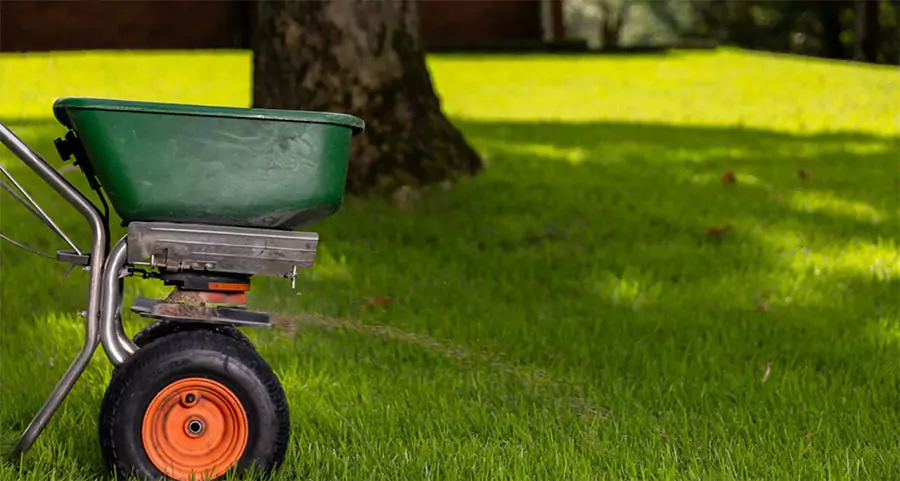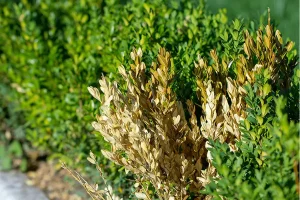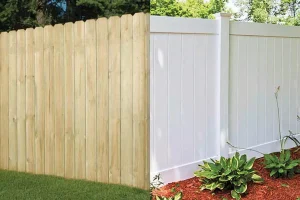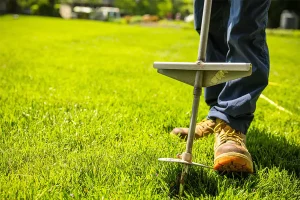Hot summers in North Texas can be tough on your lawn. Between the blazing sun and dry days, keeping your grass green in Plano, TX, can feel like a full-time job. That’s where working with a lawn fertilization specialist in Plano can make all the difference.
With the right fertilization plan and expert lawn care service, you can help your yard stay thick, healthy, and green all season long.
Let’s look at simple steps, tips, and ideas so you know just what your lawn needs to survive the heat.
How Often Should You Fertilize Your Lawn in the Plano Area?
Fertilizing too much can burn your grass. Fertilizing too little can lead to weak growth and more weeds. So, how do you get it just right?
Look at the Seasons
Spring feeding helps kickstart healthy growth. Summer feeding supports grass during high heat. Fall feeding builds strong roots before winter.
Most Plano homeowners benefit from a 4-5 application plan each year.
Watch for Signs
Yellowing grass can mean it needs nitrogen. Patchy or thin areas might show a lack of nutrients. More weeds than usual can mean weak turf needing a boost.
What Type of Fertilizer Works Best in North Texas Heat?
When it’s hot outside, not just any fertilizer will do. The type you choose can make a big difference in how your grass responds.
Use Slow-Release Fertilizers
Slow-release products feed your lawn over time. That means less risk of burning your grass and longer-lasting green.
Choose the Right Nutrient Mix
High-nitrogen blends keep the grass growing fast and thick. Balanced fertilizers with phosphorus and potassium help roots, color, and strength. Organic options feed the soil, too, not just the plants.
When Is the Best Time to Fertilize During Summer?
Hot weather doesn’t mean you have to skip fertilizing, but timing matters. Knowing what month is best for lawn fertilizer service can help you avoid stressing your grass and make sure the nutrients are absorbed effectively.
In warmer climates, early morning or late evening applications in the right month can keep your lawn healthy all summer long.
Water Before and After
Watering the lawn before fertilizing helps prevent burning. Irrigating after feeding activates the nutrients and washes them into the soil.
Avoid the Hottest Parts of the Day
Early morning or late evening is best for fertilizing. That way, your lawn won’t get shocked by the sun and chemicals together.
How Does Fertilizer Help With Weed and Pest Control?
A strong, thick lawn is the best defense against weeds and lawn pests. When your grass is healthy and well-fed, it grows quickly and thick enough to shade out weed seeds before they get a chance to sprout.
That dense turf also helps the lawn outgrow and outcompete pesky invaders. Plus, regular feeding supports better growth, which can protect against common lawn diseases like brown patch and gray leaf spot.
On top of that, strong roots make it easier for your lawn to recover from insect damage caused by chinch bugs, grubs, and other pests.
What Should You Combine With Fertilizer for Best Results?
Fertilizer works better when paired with other lawn care services.
Core Aeration
Loosens compacted soil and lets fertilizer reach the roots.
Regular Lawn Mowing
Keeps grass at the right height to encourage strong, thick growth.
Watering Routine
Deep watering once or twice a week is better than daily sprinkling.
For a while, I couldn’t figure out why my lawn wasn’t responding to fertilizer the way it used to. I was applying it regularly, but the grass still looked thin and patchy in some areas. That’s when I reached out to Stonebridge Lawn and Garden for help.
Their team explained that fertilizer alone isn’t always enough—it needs support from other lawn care practices. They aerated my yard to loosen up the compacted soil so the nutrients could actually reach the roots.
They also adjusted my mowing schedule to keep the grass at the ideal height and set me up with a proper watering routine—deep watering twice a week instead of light daily sprinkles. Within a few weeks, I noticed the lawn thickening up and looking a lot more vibrant. I had no idea how much of a difference the combination made.
– Samantha, Ridgeview Drive, Plano, TX
Weed Control Services
Pre-emergent treatments stop weeds before they grow. Post-emergent treatments knock down weeds that sneak through.
What Grass Types Work Best with a Fertilizer Program in Plano?
Different types of grass need different care programs.
- Bermuda Grass: Loves summer heat and responds well to regular feeding.
- St. Augustine: Needs more water and benefits from a good lawn pest control plan.
- Zoysia Grass: Grows slowly but stays green with steady fertilization.
A professional lawn care service in Plano, TX, can help you choose the best plan for your lawn.
How Can You Tell If Your Fertilizer Strategy Is Working?
You don’t have to guess—your yard will let you know.
Greener Lawn: A lush green lawn means the grass is getting what it needs.
Fewer Weeds: Less weed growth means your turf is thick and strong.
Fewer Brown or Bare Patches: No more brown patch spots or yellow areas means the fertilizer is doing its job.
Smart Fertilizer Tips to Keep Your Lawn Strong in the Heat
Feed early in the morning.
Applying fertilizer early in the day helps avoid burning your grass and gives it time to soak in before the sun gets too hot.
Use slow-release fertilizer.
Slow-release products give your lawn steady nutrients over time, helping it stay green longer without shocking the grass.
Water deeply after fertilizing.
A good soak helps move the nutrients into the soil where your grass roots can use them.
Don’t overdo it.
Too much fertilizer can harm your lawn more than help it. Stick to the schedule recommended for your grass type and the Plano, TX, climate.
Conclusion
Texas summers may be hot, but your lawn doesn’t have to suffer. With the right fertilizer plan, weed control, pest control services, and regular maintenance services, your lawn can look great even on the hottest days. If you’re looking for help from care experts who understand the North Texas climate, reach out to Stonebridge Lawn and Garden.
Call Stonebridge Lawn and Garden today at (972) 625-0066 for a free quote! Whether you need fertilizer and weed control, mowing, or a full lawn care program, their expert team provides the comprehensive care your yard deserves.
If you’re wondering where to start, consider how a yearly fertilization guide can transform your Plano, TX lawn. Following a carefully planned seasonal fertilization schedule ensures your grass receives the right nutrients at the right time, promoting healthier growth, reducing weeds, and keeping your lawn lush and green all year long.
Learn more about our lawn fertilization services and seasonal care plans to keep your yard thriving through every season.
Frequently Asked Questions
1. How often should I fertilize my lawn in the summer?
Usually, once during early summer and again in late summer works well in North Texas. Be sure to water deeply before and after each treatment.
2. Can I fertilize during a drought?
Only if you can water your lawn well afterward. Without water, the fertilizer may burn the grass and not help at all.
3. Why is my lawn still brown even after fertilizing?
It could be a lawn disease, soil compaction, or insect control issue. A full lawn care check can help solve the problem.




